The CahowCam star chick is growing nicely!
Its' weight on Thursday the 13th of April was 302 grams, while the wing chord was 67mm (he was also fed again that night by the female bird, so obviously has gained weight again following that feeding).
Your Custom Text Here
The CahowCam star chick is growing nicely!
Its' weight on Thursday the 13th of April was 302 grams, while the wing chord was 67mm (he was also fed again that night by the female bird, so obviously has gained weight again following that feeding).
The Bermuda petrel (Cahow) chick continues to grow and experience all of the challenges that a young petrel chick must go through during the course of its long, 3-month or more development period.
After hatching on March 2nd, the chick was fed by both the female parent on the 6th March, and the male parent, just after hatching and again in the pre-dawn hours of 8th March.
The following week was the period leading up to the full moon, when parental feeding visits often drop off as the extra light discourages the Cahows, which are nocturnal over the breeding grounds, from visiting the nests. As a result, the chick was not visited or fed for 6 days, until the female parent finally returned to the nest in the predawn hours of March 14th, under cover of cloudy, stormy weather, staying over for the day in the nest burrow with the chick and feeding it at least 4 separate times.
Although many viewers have expressed concern about the length of time that the chick was left on its own, this is completely normal for the Cahow and chicks can be on their own for a week or more between visits, with no lasting ill effects.
Cahow chicks, like those of other seabirds in the tubenose seabird family, which includes Albatrosses, Shearwaters and Petrels, are precocious, or quite highly developed when they hatch (which is one of the reasons the egg incubation period is so long), and are equipped with coats of long, dense down which enable them to keep warm and survive on their own in cold, damp underground burrows without needing the adults after the first 2 or 3 days.
The adults indeed have to spend almost all of their time out at sea finding enough food, or the chick will starve. These chicks take about 3 months (about 90 days) to fully develop, and then fledge to sea on their own, with no parental help or instruction. They then must learn to survive, find and catch food, out on the open ocean on their own, in about a 10-day period after fledging before their own fat reserves are exhausted , or they will not survive. Life for the Cahow is not easy, and it is a testament to what tough survivors they are, that they not only survive in one of the toughest environments on Earth (the open ocean), but are also recovering (with a bit of assistance!) from what can only be described as the very edge of extinction.
After the full moon on the 12th of March, we expected to see an increase in adult feeding visits, and that was just what happened. The female parent visiting on the 14th, 17th, 21st and 22nd March, a couple of times staying over the next day with the chick in the nest, while the male adult has visited on the 15th and 20th March.
It appears that the female has located a prey-rich foraging area much closer to the island and so has a shorter return time, while the male is going much further away to gather food on a approximate 5-day rotation.
This male had been fitted with a geolocator tag for 2 years back in 2009-2010, and we know he generally travelled well away from Bermuda, ranging from just south of Nova Scotia to 1500 miles northeast of Bermuda (two-thirds of the way to the Azores Islands!), so I suspect that is the approximate area where he is going now.
All of these feeding visits have enabled the chick to increase rapidly in weight, from just 52 grams on March 13th, to 153 grams just 2 days later on March 15th, and to 192 grams on March 22nd.
This increase/decrease in the chick's weight as it develops is a normal part of it's development, and I expect we will see another temporary decrease in the next full moon period, approximately the 5th to 11th April. However, stormy and cloudy weather may also enable the adults to sneak in, so you never can tell. If the chick continues to develop normally and is adequately fed by the adults, we can expect to see its weight increase to 300 grams or more by the end of April. The current record peak weight for a Cahow chick was 557 grams, almost double the weight of an adult! More normal peak weights for chicks however range from 330-430 grams, and last year's CahowCam chick reached a peak weight of 435 grams on May 18th. After reaching their peak weights, feeding visits by the adults become fewer and the chick completes its development using its fat reserves accumulated earlier in their growth, going through a "slimming down" period before fledging to the open ocean at a normal weight range of 250 - 300 grams.
UPDATE March 26th: The weight of the R831 chick today (Sunday March 26th) was 151 grams, while the wing chord was 40mm. By comparison, on Wednesday (March 22nd), the weight was 192 grams, while the wing chord was 32mm. The most advanced chick on Nonsuch (in the R821 burrow) was 247 grams today with a wing chord of 50mm.
The burrow on Nonsuch Island is opened for a health check of the 6 day old Bermuda Petrel chick by Jeremy Madeiros the Senior Terrestrial Conservation Officer. After a feeding from the adult male last night, the chick looks healthy and is gaining weight.
After a scare from a prospecting Cahow on March 6th, the chick was fed by the female parent on March 7th and the male in the early hours of March 8th and is now up to 83 grams from 72 grams the day before.
Watch a video REPLAY below, which is the first in a series that will be broadcast LIVE via the Cornell Lab of Ornithology Network. In this test our Team's focus was the logistics and networking required for live-streaming using solar power and wireless internet from a remote island through to the Cornell Campus. Future episodes will have much higher production and video quality. Educators should CONTACT US and SUBSCRIBE to our Newsletter for more information.
The Cahow chick that hatched on March 2nd in the CahowCam nest on Nonsuch Island has already had an eventful life.
* See update at end of article.
After hatching, the adult male stayed with the chick for two days, feeding it at least three times before flying back out to sea on Saturday evening. Both parents are now into the cycle of lengthy feeding trips to gather squid, shrimp-like organisms and small fish from cooler water hundreds of miles from the nesting islands, and will only be feeding the chick every 3 to 5 days at night for an hour or two before heading back out to look for more food. The chicks are well equipped with their thick coats of warm down to wait for up to a week or more on their own for these brief feeding visits.
On Sunday night/early Monday morning when a adult Cahow appeared in the nest at 1.40am my first thought was that the adult female had returned to feed the chick. It was soon evident, however that something was wrong, as the adult was nervous and edgy and was very aggressive towards the chick; rather than gentle preening the adult was biting the chick quite hard in what could only be described as an attack. Luckily, the chick basically played dead and after 18 minutes the adult left the nest. However, it looked back in at least 3 times over the next few hours, but turned and went back out as soon as the chick began cheeping.
It is now evident that the mystery intruder was in fact a young prospecting Cahow that was looking for an empty nest burrow, which they can be quite aggressive about as it is one of the more important decisions in their lives. This incident however, as revealed by the CahowCam, finally confirms a suspicion about a rather alarming threat to the newly hatched chicks. Every year, I have noted that one or two chicks that appear to be healthy and growing normally during one check are found dead during the next check without any of the marks generally associated with, for example a rat attack. It now appears likely that aggressive young prospecting adults may sometimes get rid of the chick in order to try and take over the burrow.
This chick was lucky to have survived the attack, and indicates that despite all of the management that we carry out to help the Cahow a better chance to survive and recover, that life is still precarious for one of the world's rarest seabirds. Let's hope that the next visitor is in fact one of the legitimate parents coming to feed the chick!
UPDATE March 7th 00:05 am | Fortunately one of the parents seems to have returned the following night for a traditional feeding session.
UPDATE March 8th 01:40 am | For the second night in a row a parent has returned, this time more than likely the male. It should be noted that though the above event was distressing to watch that the Conservation Services Team have mitigated 99% of similar threats to the Cahows through the ongoing suppression of rat infestations on the islands and through the installation of baffles to stop the prospecting Tropic Birds from taking over the nests.
Jeremy Madeiros, Senior Conservation Officer (Terrestrial), Dept. of Environment and Natural Resources, BERMUDA
(Watch LIVE CahowCam video here)
On January 11th, 2017, the egg in the R831 Cahow nest burrow on Nonsuch Island was laid less than an hour after the female returned having spent the past few weeks at sea.
Both adult Cahows then took turns incubating the egg, with the female incubating a total of 25 days, the male for 22 days, and both adults together for 4 days.
Faint cheeps from the nearly ready to hatch chick were heard from inside the egg on the evening of March 1st. On Thursday 2nd March, after 51 days of incubation, the chick started to chip its way out of the egg, with the first hole in the eggshell seen around 4.00am.
At about 7.30pm that evening, the male Cahow returned to take over incubation, and was probably surprised to find the chick already hatching! Shortly after the female departed to sea, the chick started to break free of the egg, and by 9.45pm the chick had freed itself from the last of the eggshell, allowing us to officially confirm hatching!
The still-wet chick will be closely brooded by the male bird until it is fully dried out, which should take about 2-4 hours. We should then get a good look at the chick, which will have dried out to become the familiar grey fluffball, insulated by a thick double layer of soft down. This down will enable the chick within 2 or 3 days to be able to survive without being warmed by the adults, which will spend most of their time at sea foraging for food for the chick. The chick will only see the adults for an hour or two every few days when they arrive on feeding visits, after which they return to sea to forage for the chicks next meal. It is not unusual for adults to stay with the chick for a few days, especially when the chick is still young.
Geolocator tags fitted to the adult Cahows have confirmed that they can travel between 1500 and 4000 miles during each foraging trip - to feed the chick once! These foraging trips can last from 3 to 10 days or more and take the adult Cahows to the south of Nova Scotia, up to the Grand Banks or even almost as far as the Azores Islands, with the birds generally looking for food in the cooler waters north of the Gulf Stream. The adults will have to keep this up for the next 85 to 95 days, when the chick is ready to fledge out to sea on its own in late May or early June.
Jeremy Madeiros | Senior Conservation Officer (Terrestrial) | Dept. of Environment and Natural Resources | BERMUDA
Nonsuch Island, Bermuda - 9.45pm Jan 11th - Female Cahow returns and lays egg within an hour, officially launching the 2017 CahowCam season.
Now in their 5th Season, the Nonsuch Expeditions Team have partnered with the Cornell Lab of Ornithology to bring the Cahow story to the world.
And an egg was laid at 22:41 Bermuda time! Congratulations! Let the breeding season officially begin. pic.twitter.com/qIu5DaBysE
— BermudaCahowCam (@BermudaCahowCam) January 12, 2017
The original CahowCam is installed in the top of burrogh #831, in translocation colony A, on Nonsuch Island in Bermuda, from which it has been broadcasting LIVE via the internet for 4+ years.
This season a second camera has been installed underground on the side of the nesting chamber giving an alternate view of the nest and after several weeks of planning, digging and installation it went fully LIVE the afternoon prior to the females return.
The female was actually a few days earlier than expected as last year she returned on the 15th, however at 9.45 pm our Team received a motion alert and promptly logged on to observe.
Both Chief Conservation Officer Jeremey Madeiros and Cornell's Charles Eldermire were watching (and recording) LIVE as she spent the first hour rearranging her nest and then promptly laid here single egg.
Jeremey Madeiros - January 11th
Exciting night as I watched the female E0197 bird enter the nest at 9.45pm. After building up the nest to its liking, the bird settled in and at 10.43pm abruptly lurches forward off the nest almost into the camera lens, revealing a newly-laid, glistening wet egg - less than an hour after arrival!
Terrestrial Conservation officer Jeremey Madeiros and Cornell's Charles Eldermire examine an artificial Cahow burrow.
Over the past four Cahow nesting seasons, LookBermuda’s award-winning Nonsuch Expeditions CahowCam has grown from strength to strength, broadcasting from the underground nesting chambers of the second rarest seabird on the planet: the critically endangered, endemic, Bermuda Petrel or “Cahow”. Numerous "first time documented" events were filmed during this period including the hatching of a Cahow chick that was live streamed to the conservation team, bird watchers and classrooms around the world.
Nonsuch Expeditions leader and CahowCam designer J-P Rouja: "Whilst our worldwide audience has been growing organically from year to year, with several thousand viewers watching when the chick hatched this past spring and several hundred thousand minutes of video streamed throughout the season, we have been doing this completely on our own."
To take this to the next level we reached out to the Cornell Lab of Ornithology's Bird Cams project, an effort that has created an extensive network of live streaming cameras with an audience of millions of viewers and an emphasis on education and research. We're excited to announce that Nonsuch Expeditions will be partnering with the Cornell Lab for the 2017 CahowCam season, allowing us to bring a renewed focus on the Cahow conservation efforts in Bermuda while providing a more robust streaming experience and greater exposure to new audiences.
The Cornell Lab's Bird Cams project leader Charles Eldermire was very positive when we proposed the partnership, remarking that, "Given their precarious future and their out-of-sight lifestyle, the Cahows seemed like a perfect fit for the Bird Cams. The previous efforts and expertise of the Nonsuch Expeditions team made us even more confident about the opportunity that this partnership presented."
J-P Rouja, Charles Eldermire and The Hon. N. H. Cole Simons, JP, MP
Eldermire visited Bermuda this past November to get a better idea of the scope of the Cahow conservation effort. During three days of meetings, checking nests, and troubleshooting technology, he met with important stakeholders and leaders for Cahow conservation and consulted with Department of Conservation Services biologists and Nonsuch Expeditions team members to help develop a plan for the coming season.
"We're really excited to be sharing the hidden world of the Cahows with an even wider audience, and to collaborate with the Nonsuch team to create meaningful experiences for viewers that raise awareness about the continued need for conservation of the species."
As of the posting of this article in mid December, the Cahows had just completed the courtship phase of the upcoming nesting season, having returned to Nonsuch and the surrounding rocks in November for courtship, nest preparation and mating. Thus far this season 117 pairs have been verified putting us on track for a record. The birds have now left for the month of December and the females are expected to return to lay a single egg the first week in January.
Please visit the CahowCam page to view the live video stream and highlights from the past nesting seasons and be sure to sign up to the newsletter for notifications of the upcoming season.
The final benchmark for deeming the Nonsuch Island Cahow Translocation Project a success has been reached!
At the start of the 2017 Cahow nesting season, during the courtship activities in November, a new pair was observed building a nest and courting on Nonsuch Island by Jeremey Madeiros, Head Terrestrial Conservation Officer.
The pair consisted of two newly returned fledglings, the male born on Nonsuch Island from parents who had been translocated there during the translocation process which started in 2001 and the female remarkably from one of the original nesting islands. In this instance not only has a second generation Nonsuch Cahow returned, it has also attracted a female from a nearby island, reducing the risk of in-breeding that could otherwise occur in site specific nesting clusters.
Fledgling Cahows normally return to nest on the island and location from which they fledged, often within a few feet of their original nest, which could easily result in in-breeding with a species that has so few members and is so close to extinction.
This is a very significant milestone. However Jeremey points out that with a total world population of just over 300 birds (which nest only in Bermuda) and with the majority of them still nesting on the smaller outlying islands that have been steadily, increasingly, eroding over the past decades, we are still a very long way from ensuring the survival of the species.
Nonsuch in the longterm, with its higher topography than the original islands, will be able to naturally sustain thousands of natural nests extending well beyond translocation Colony A and the new Colony B, however even then, an ongoing, species management program will be necessary to protect them. Rats for example have recently started swimming over from Coopers island and if let unabated would very quickly decimate the entire colony.
Another encouraging fact is that during the annual Pelagic Bird Watching Trips this past season documented a marked increase in the Cahows being observed, this year with groups of 20 and as many as 30 being observed during their aerial courtship exercises.
Due to popular demand, a series of Natural History notecards based upon the stunning Nonsuch Expeditions photography has been released.
They may be purchased at the following retailers: The Irish Linen Shop | BUEI | Pulp & Circumstance | The Hamilton Princess & Tuckers Point Resort Shops
They are printed on heavy weight museum quality A6 sized notecards. The image on the front is against a white background, the species and collection details are on the back and the inside of the cards are blank.
They are also available in the BETA of our online shop here, for delivery or pickup in Hamilton.
Bermuda and Nonsuch Island in particular dodged the proverbial bullet with Hurricane Nicole.
The Category 2 storm passed directly over the island, with Bermuda passing directly through the eye, which resulted in the winds flipping directly from East to West without passing to the South which traditionally causes a tremendous amount of coastal erosion.
The fact that it also passed at low tide further reduced the impact of the southerly swells which in recent storms have been severely impacting the original outlying Cahow nesting islands re-enforcing the importance and urgency of the Nonsuch Translocation Project.
On Nonsuch there was tree damage with large Bay Grapes in particular being uprooted. The salt and wind-burn however was the worst since Hurricane Fabian due in part to the second part of the storm being dry. This has had the side benefit of reducing the number of invasive seedlings and stressing the remaining casuarinas, making the recent round of girdling that much more effective in their removal process.
The timing of this late in the season storm, in mid October, was also quite fortunate, Gonzalo which arrived a week later 2 years prior, drowned 5 pairs of Cahows in their nests which had returned slightly early for their November courtship and nest preparation rituals. This storm being a week earlier does not appear to have had similar effects.
3am Oct 13th 2016 | Hurricane Nicole is currently approaching Bermuda as a strong Category 3 with a direct hit expected around noon on October 13th. The 130+ mph winds, high seas and storm surge coming in from the south-east for several hours will impact Bermuda's southern coastline including Nonsuch and the other outlying Cahow nesting islands which directly face the open ocean in this direction and are not protected by Bermuda's coral reefs as found on the northern side of Bermuda.
Nonsuch has been evacuated and our team will return to the island as soon as the weather subsides and it is safe to return to asses the damage (not before Friday) and will post updates as soon as we can. This storm is arriving just prior to the start of the 2016/17 nesting season, otherwise we would have run the risk of losing early returning birds as we did in Gonzalo.
Below is a video that we produced that highlights the impact of sea level rise and hurricanes on Nonsuch and why the ongoing translocation process is so important to the survival of the species.
The Nonsuch Expeditions Team in collaboration with National Geographic photographer David Liittschwager has just wrapped up shooting after 11 straight days on Nonsuch Island and in other key Habitats around Bermuda, in the process adding hundreds of stunning new images to its' archive.
A big thank you to the Ministry of the Environment and Natural Resources, in particular Jeremy Madeiros, Alison Copeland and Specialist Marine Collector Chris Flook.
These images will become part of the next round of Nonsuch Themed AirportArt installations and will be incorporated into our Educational Outreach programs.
Anyone who is interested in supporting this initiative should contact LookBermuda.
BHS Student Nina Wehmeyer was awarded the top collector award for her efforts during the recent Nonsuch Expeditions pilot biodiversity program as part of BHS's STEAM week.
The two day program which was incorporated into the recent round of ongoing Nonsuch Expeditions biodiversity photography was a great success with students participating in the exploration of the Hungry Bay coastal and mangrove habitats and assisting Specialist Marine Collector Chris Flook with the collection of specimens that were then documented by National Geographic photographer David Liittschwager and LookBermuda's J-P Rouja.
Ms. Wehmeyer assisted in the collection of several unique specimens including a frogfish and small squid, a print of which was presented to her during the BHS final assembly by Head of School Linda Parker.
"I would just like to thank you so much for the picture of the squid I received from Ms. Gunther. I really appreciate it a lot and I will treasure it. Also thank you very much for the opportunity to learn and explore with you and the rest of the team with my school over the two days last week, I really enjoyed it and it has opened a new door of interest, which I now have in the ocean and coastal life. I hope in the future I will come across other opportunities to work with you again to further add to the knowledge I have gained."
Nina Wehmeyer
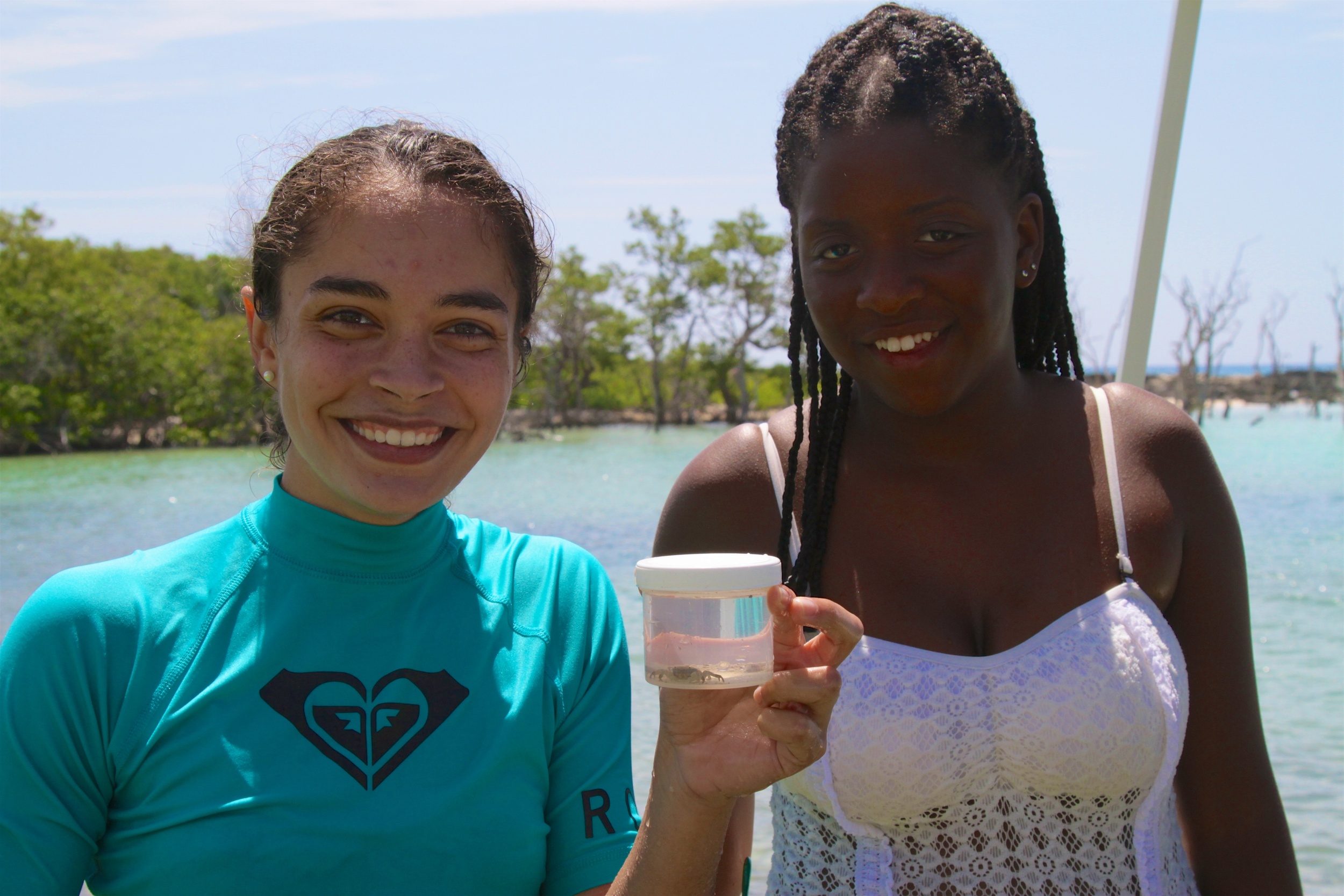
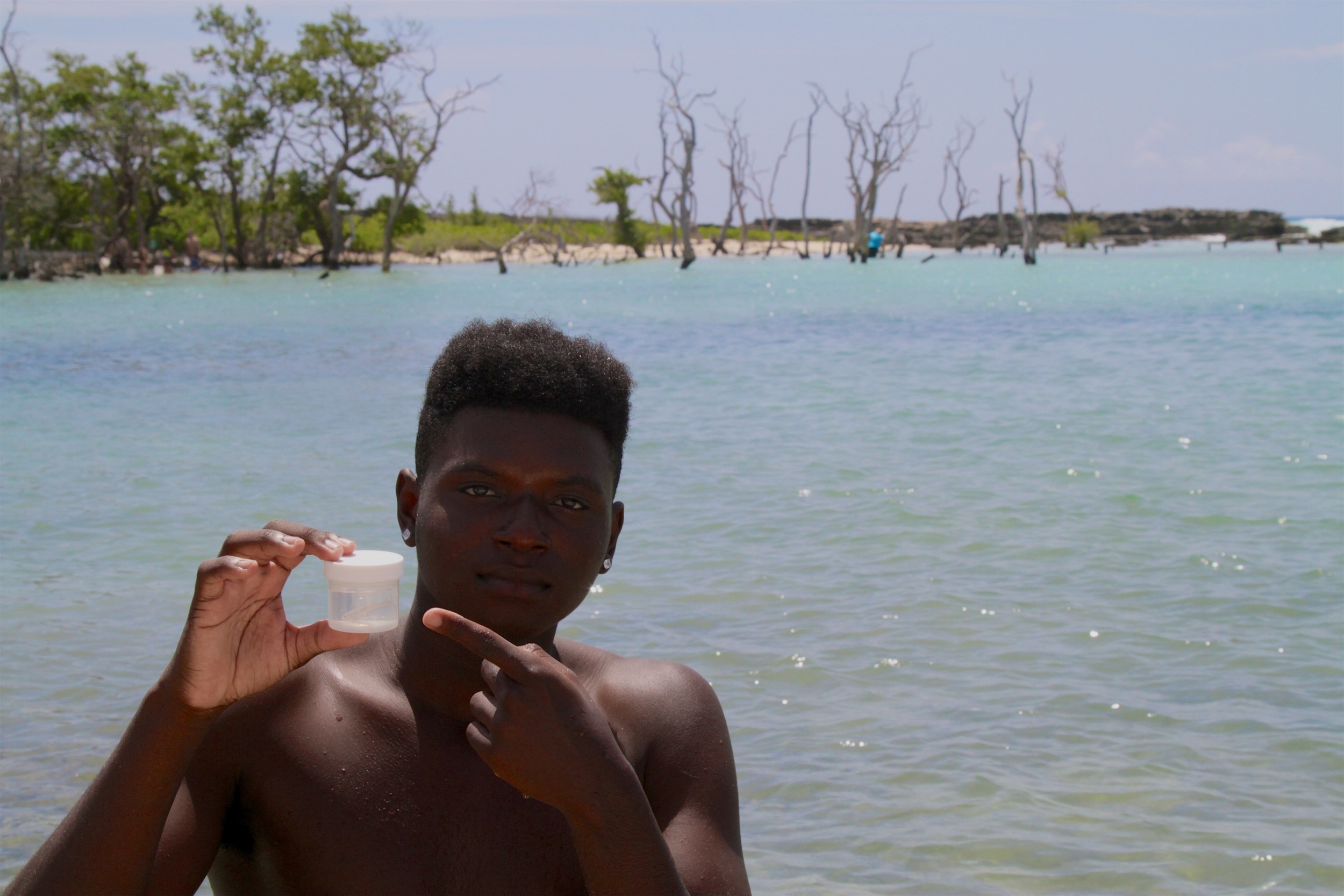
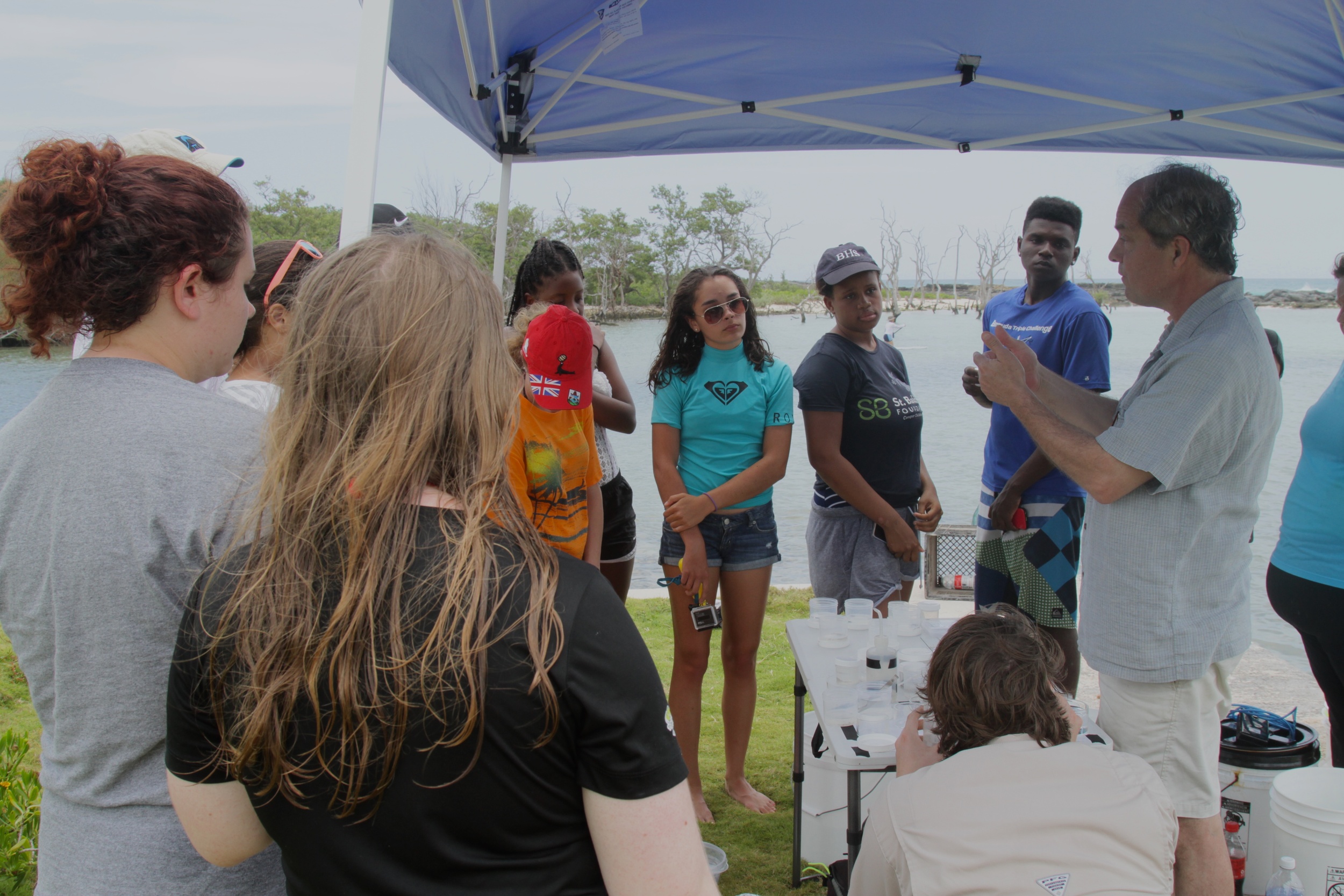
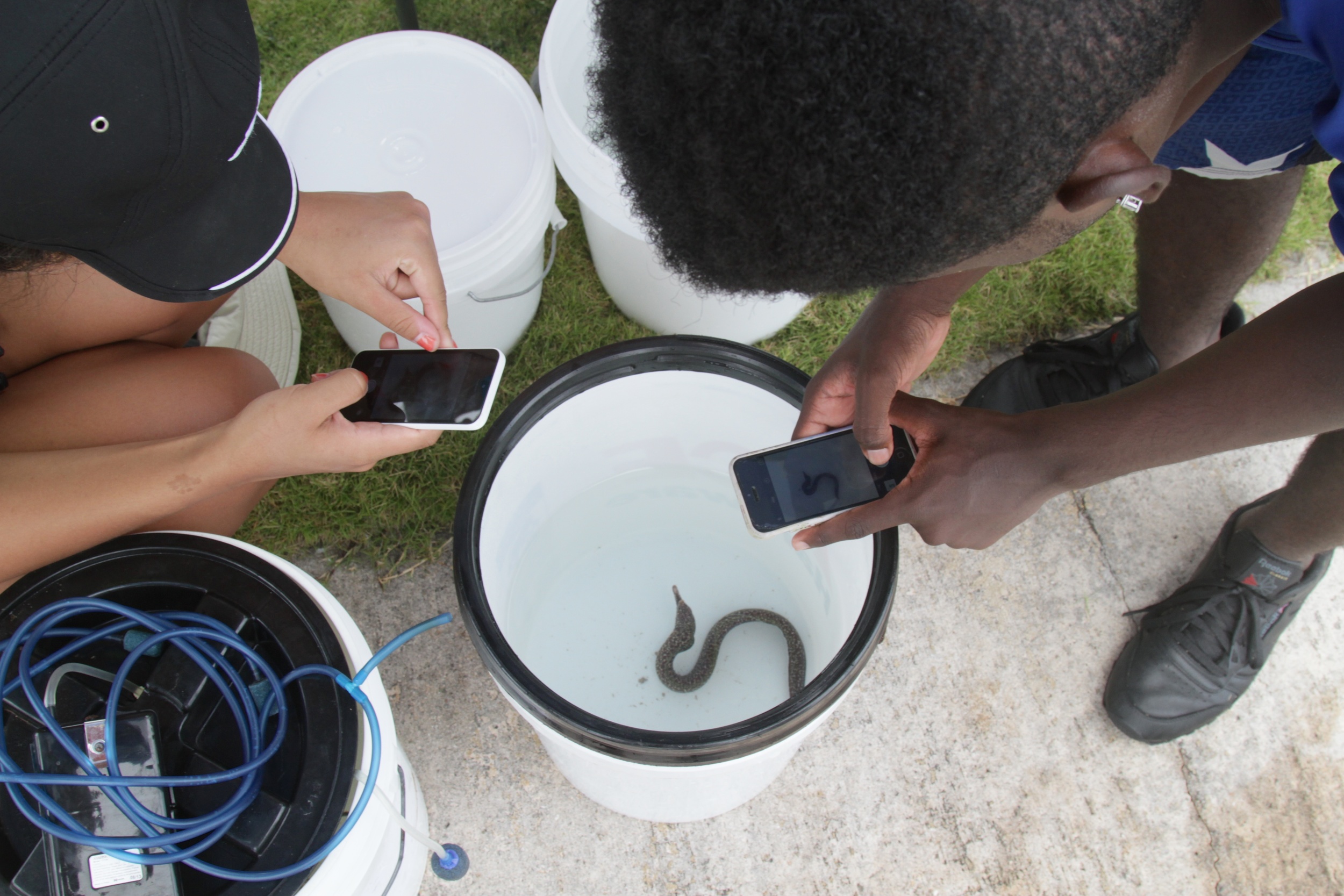
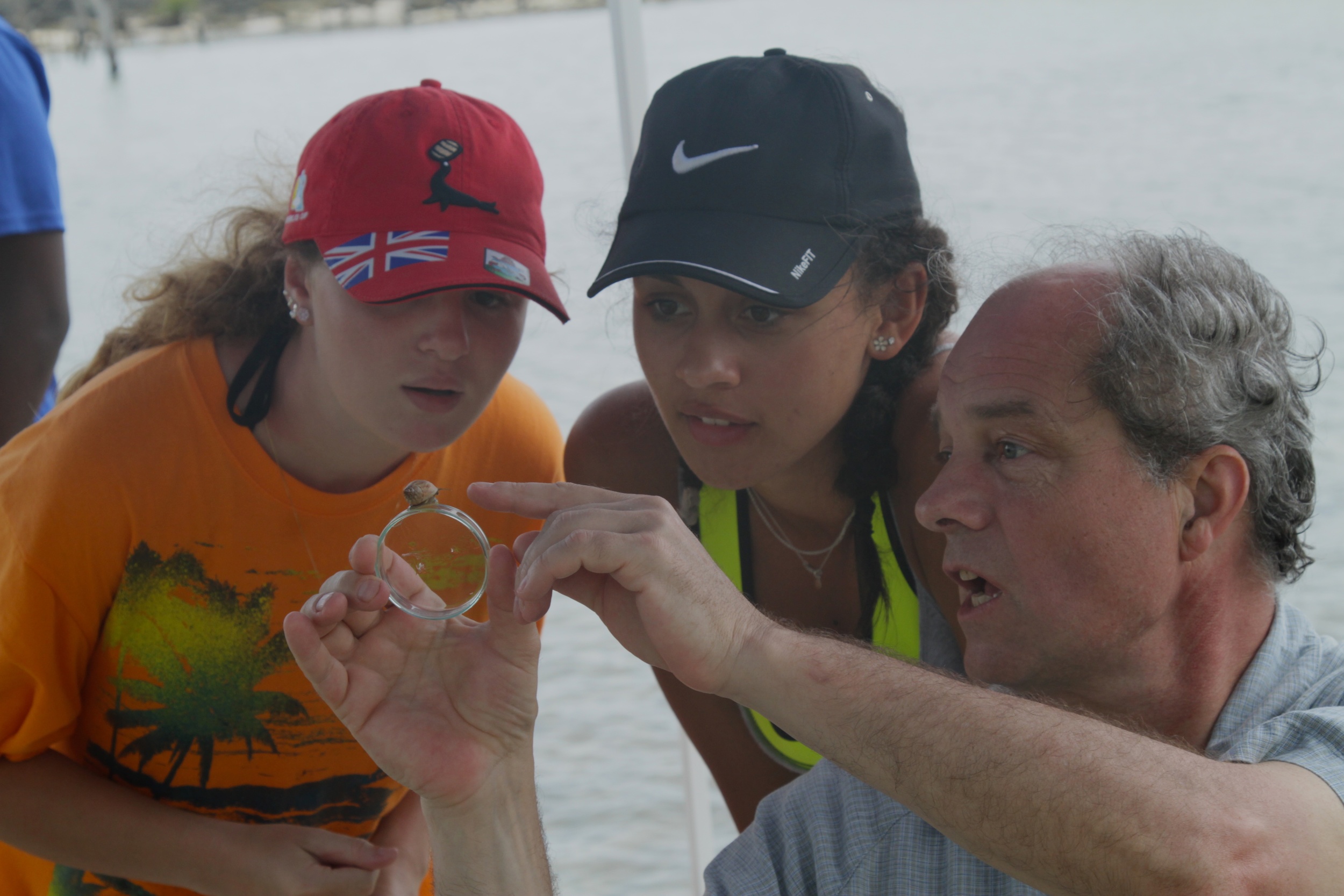

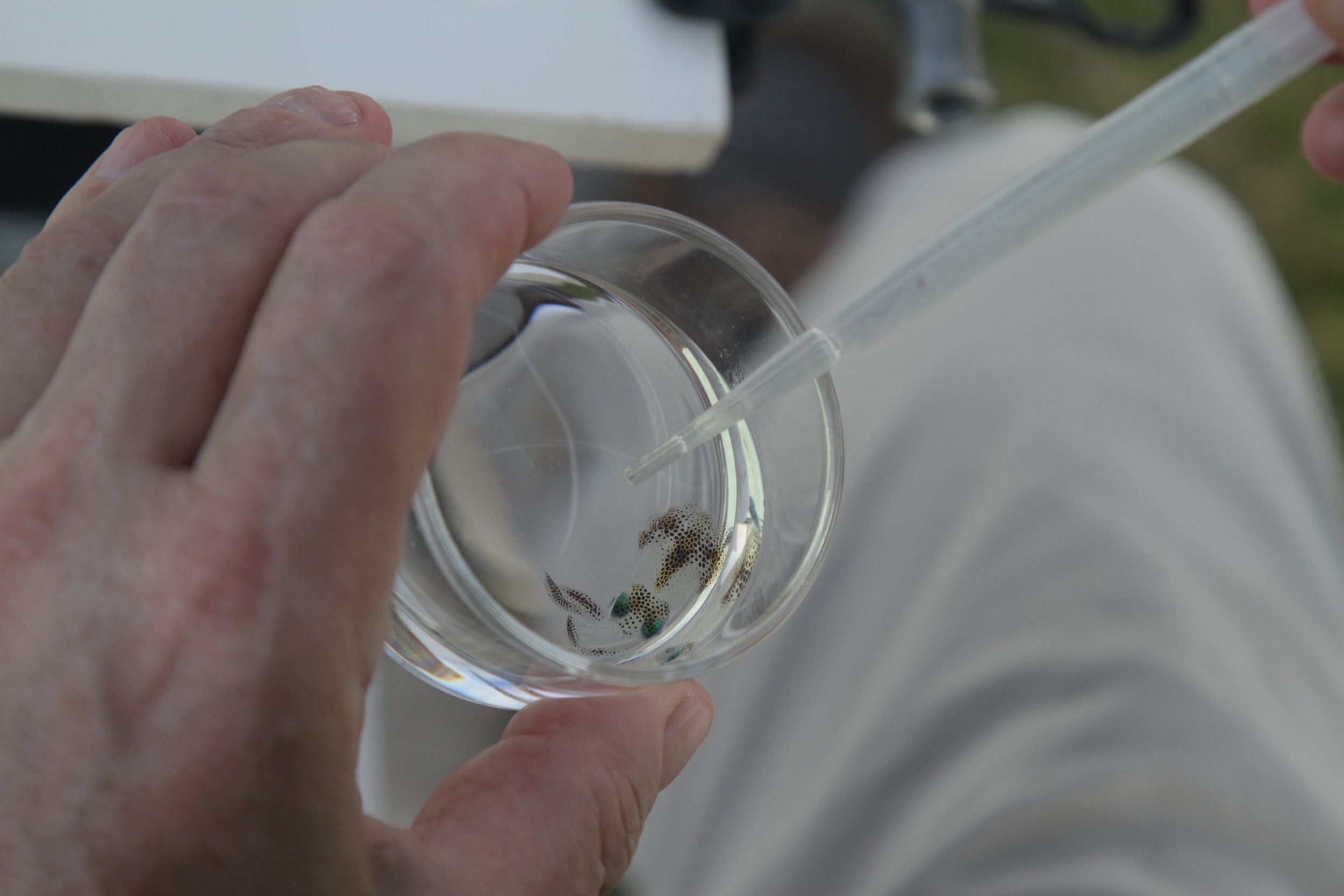
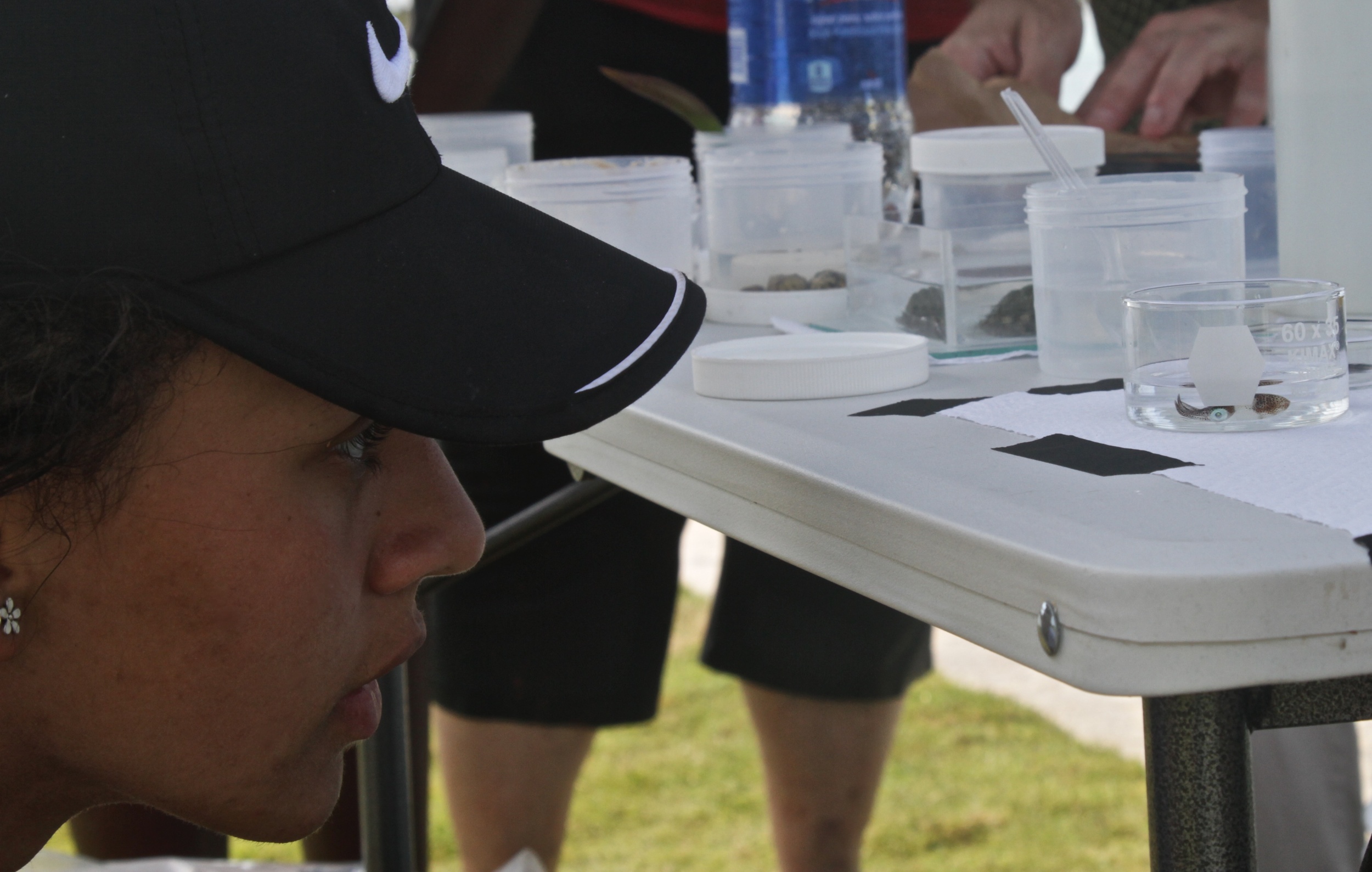
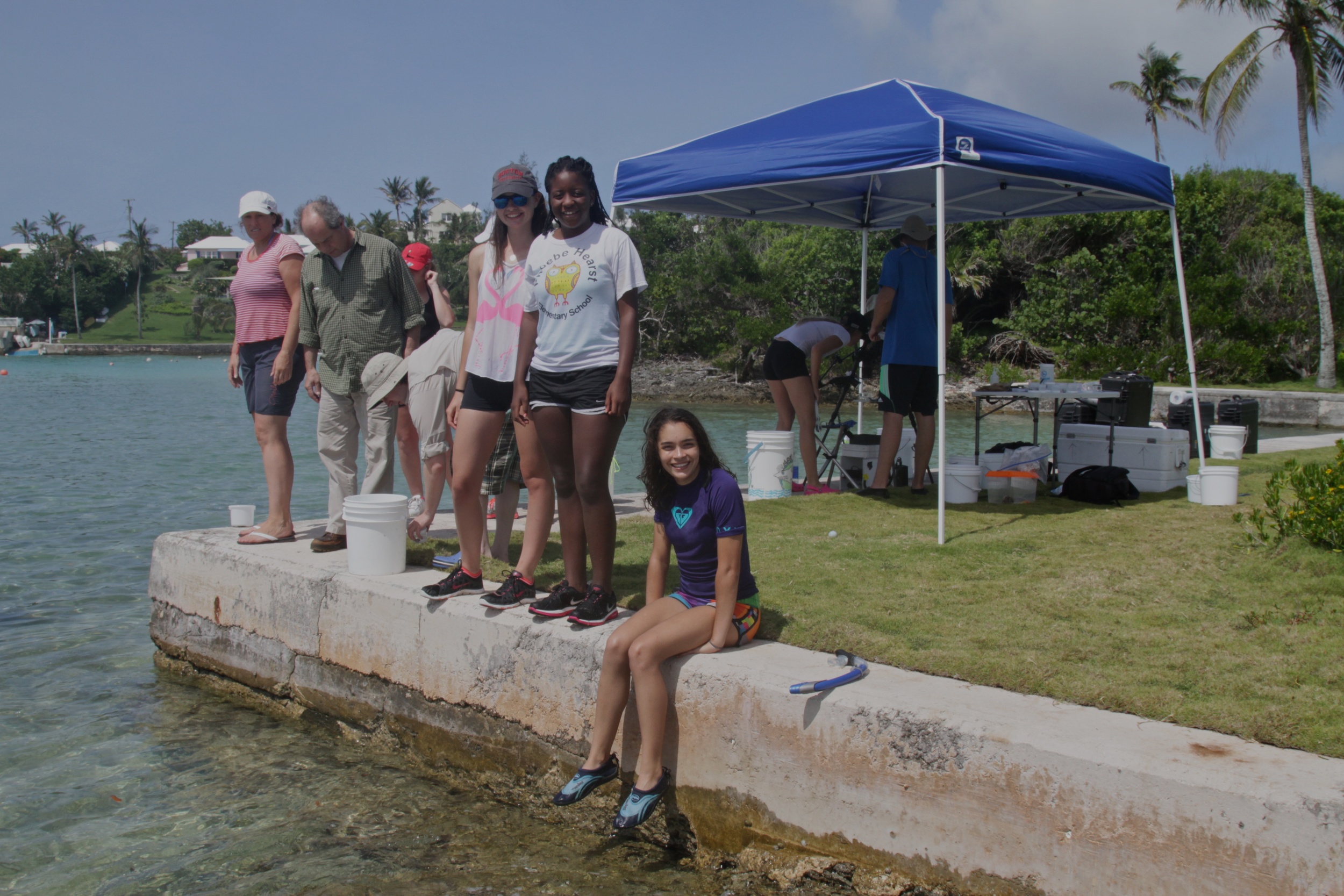
See a showcase of Bermuda's biodiversity from Nonsuch Island and beyond through the lens of National Geographic photographer, David Liittschwager, and LookBermuda's J-P Rouja. Enjoy an evening filled with updates from the ongoing Nonsuch Expeditions including videos, photos, an update on this year's record setting Cahow season, CahowCam highlights and a preview of their pilot Experiential STEAM program.
Tuesday, June 28th at 7:30pm
5:30pm: Sushi Happy Hour at Harbourfront (specially-priced sushi) - 6pm: Harbourfront opens for dinner - 7:30pm: Lecture starts, Tradewinds Auditorium
Members: $20; Non-members: $25 Students: $10. Tickets available by calling 294-0204 or visiting Oceans Gift Shop at BUEI.
Ticket holders are entitled to 10% off dinner at the Harbourfront (food only) before or after the lecture. Please call 295-4207 for reservations and be sure to mention the lecture. Cannot be combined with any other special offers.
For their 2016 STEAM Week, a group of BHS IB students are participating in a pilot Experiential STEAM program collecting and photographing biodiversity samples at Hungry Bay alongside National Geographic photographer David Liittschwager who is on island as part of the ongoing Nonsuch Expeditions.
The Cahow chick, star of the 2016 CahowCam livestream has officially been named "Tempest" by Elizabeth Madeiros, daughter of Chief Terrestrial Conservation Officer Jeremy Madeiros. He was named after William Shakespeare's Tempest play which was in turn based upon Bermuda's founding wreck the Sea Venture, a most fitting name, especially during the 400th year anniversary celebrations. Tempest hatched live on camera on March 6th and has since been watched by 10's of thousands of viewers via the award winning CahowCam and is expected to fledge out to sea in the beginning of June.

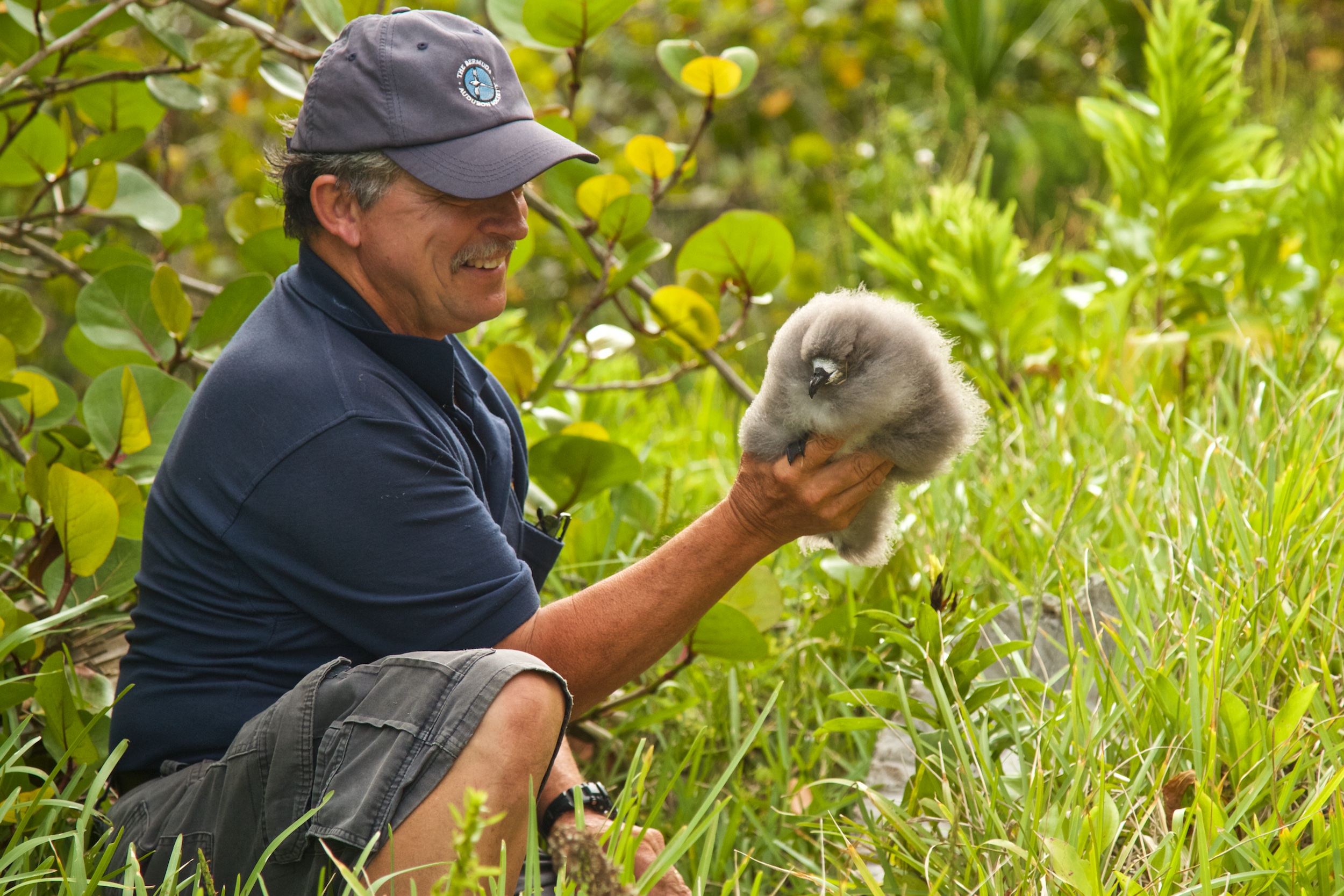
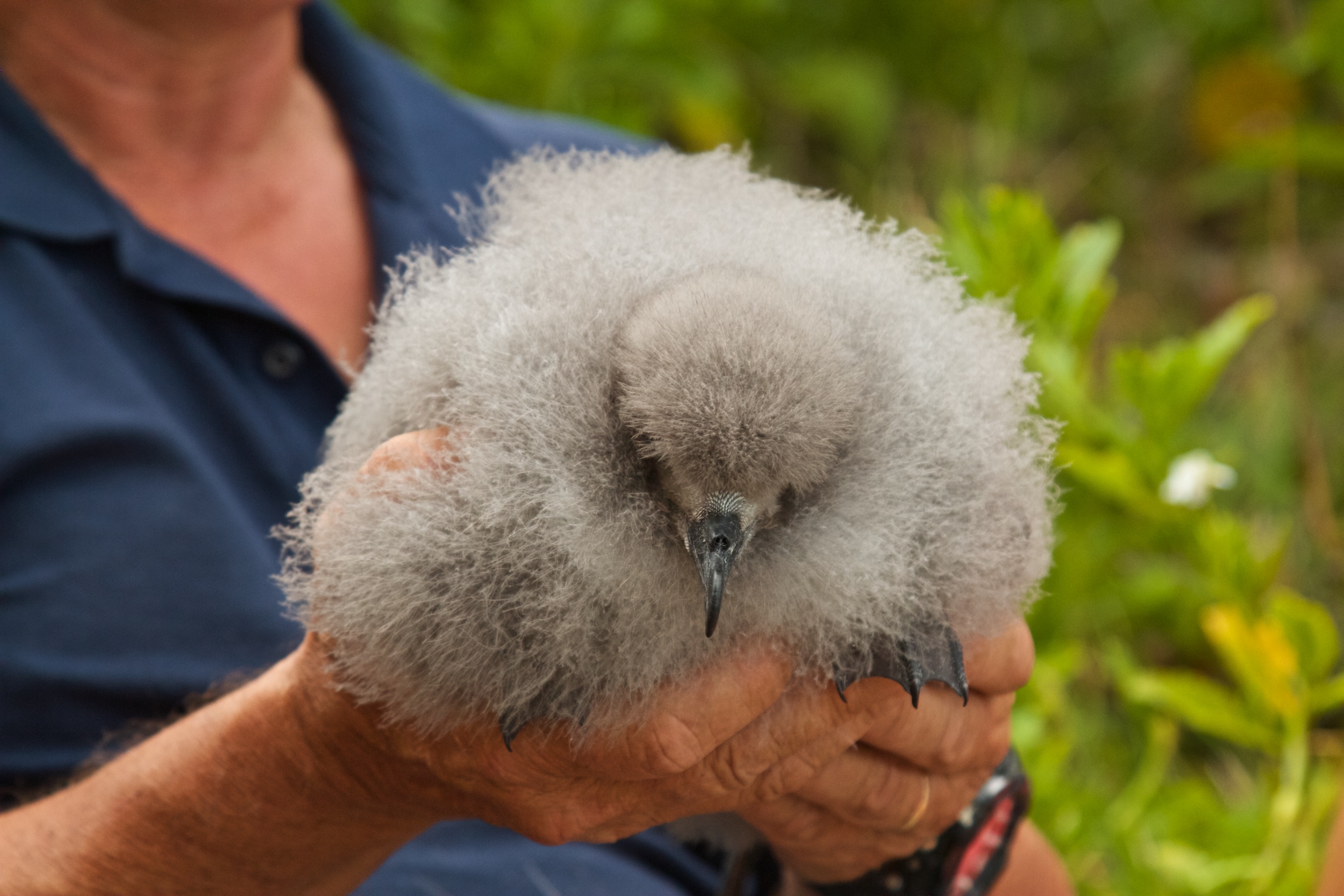
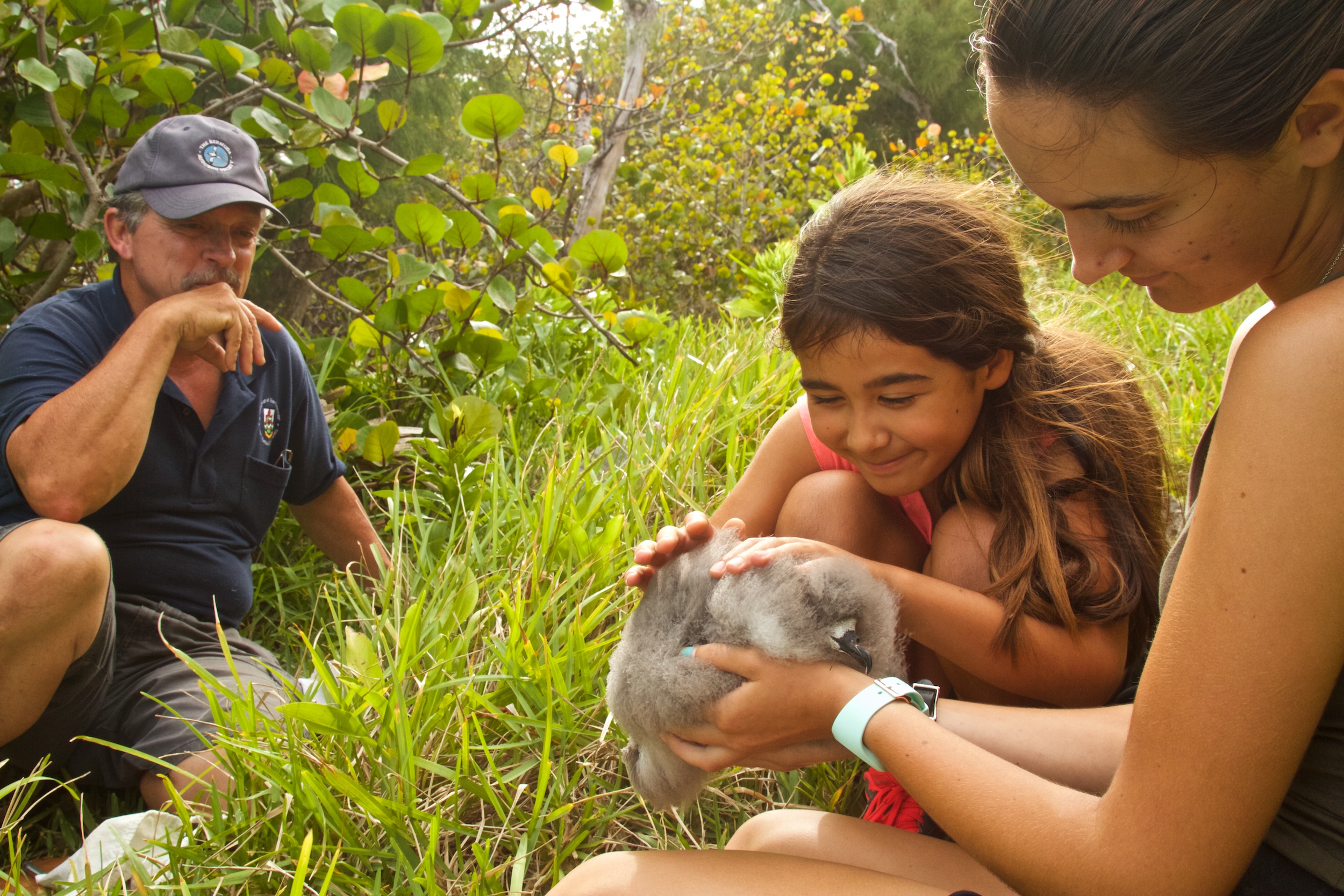

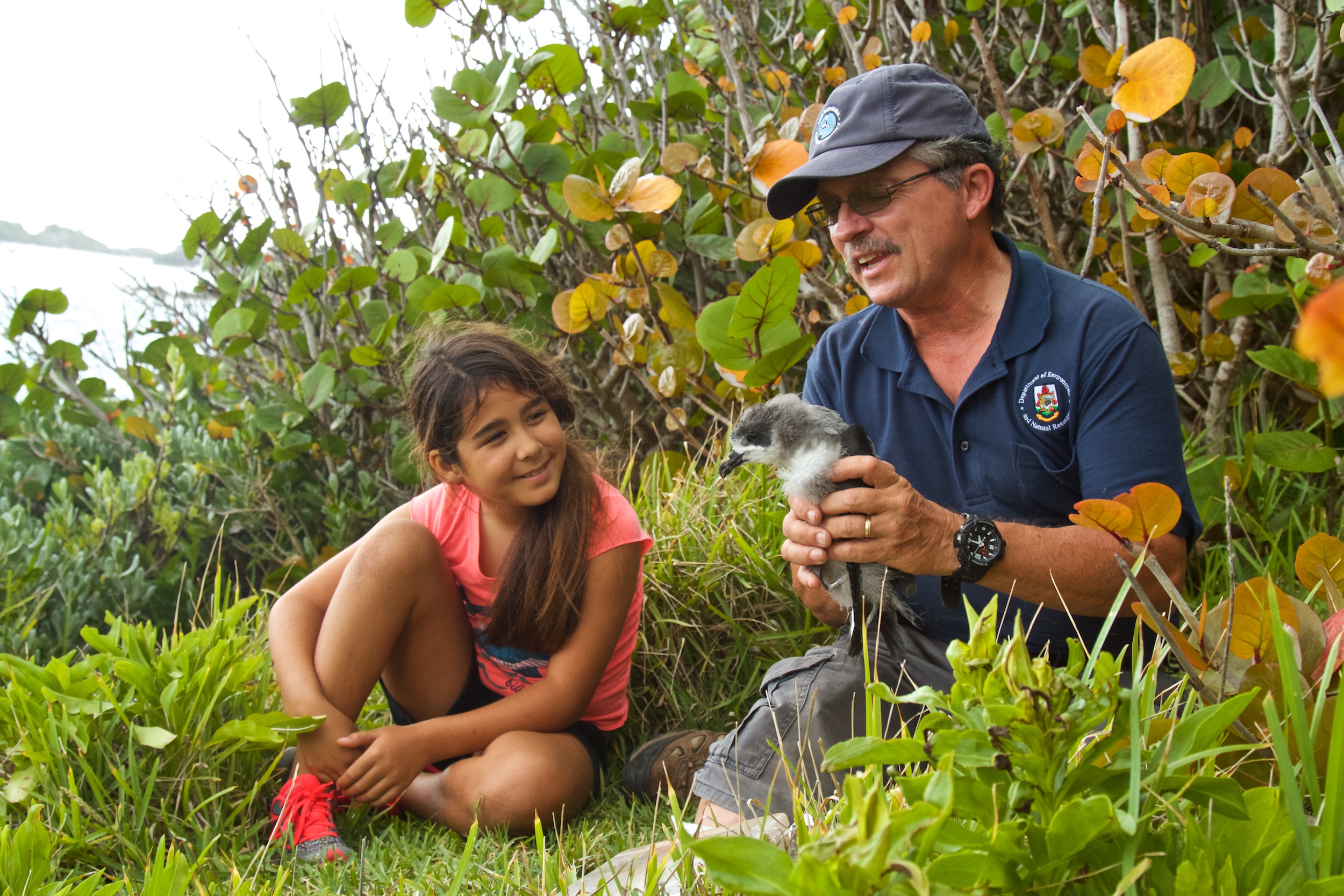
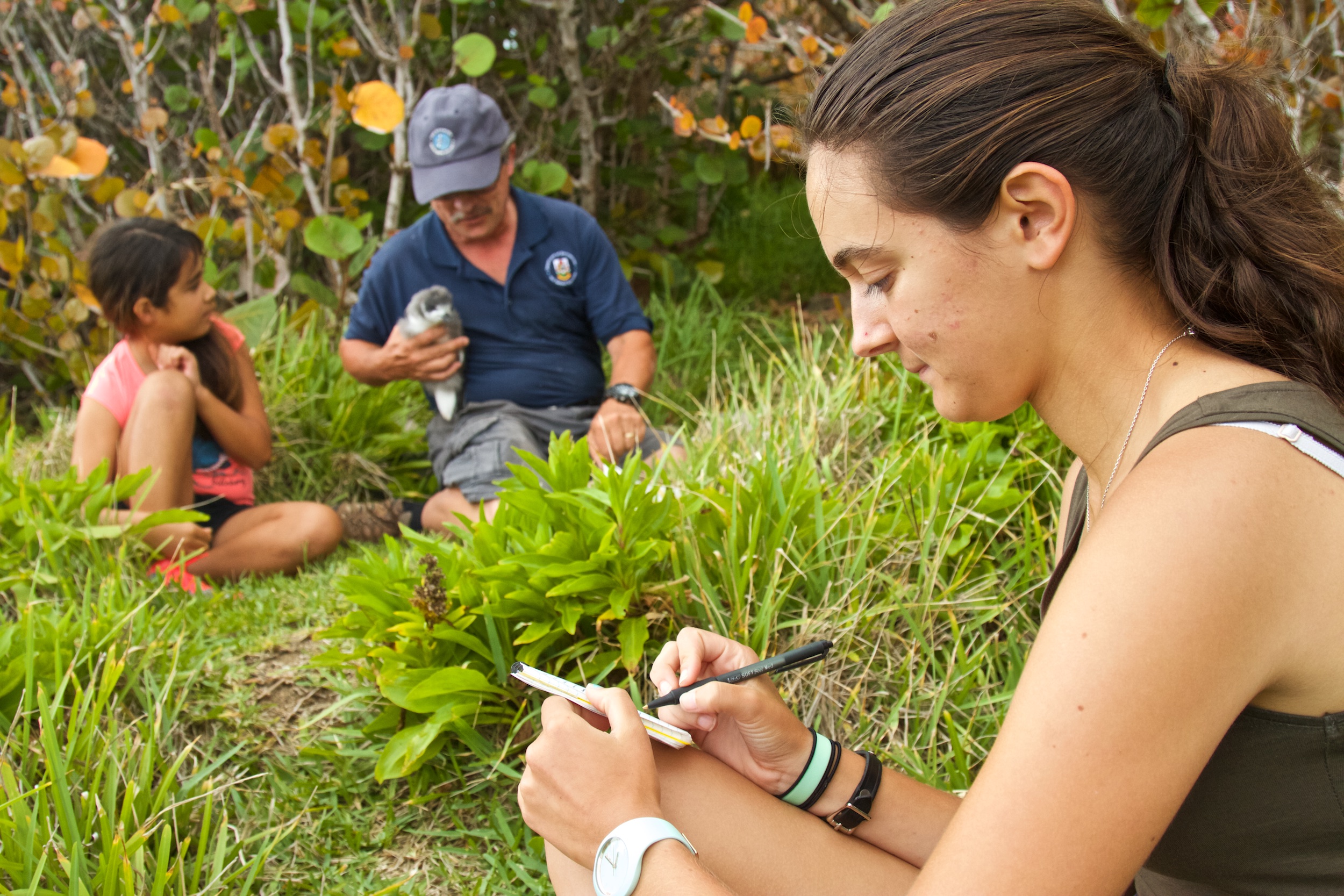
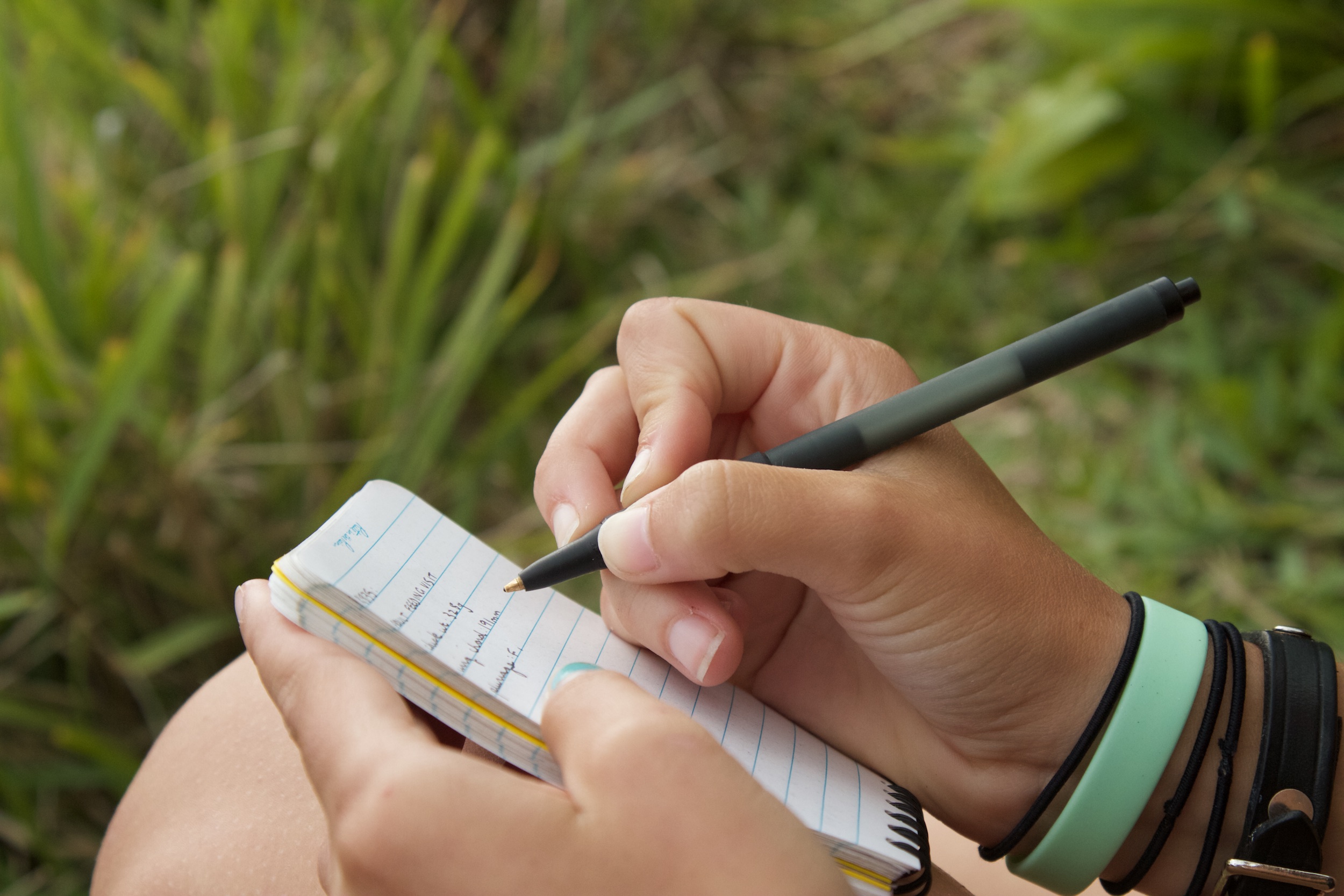
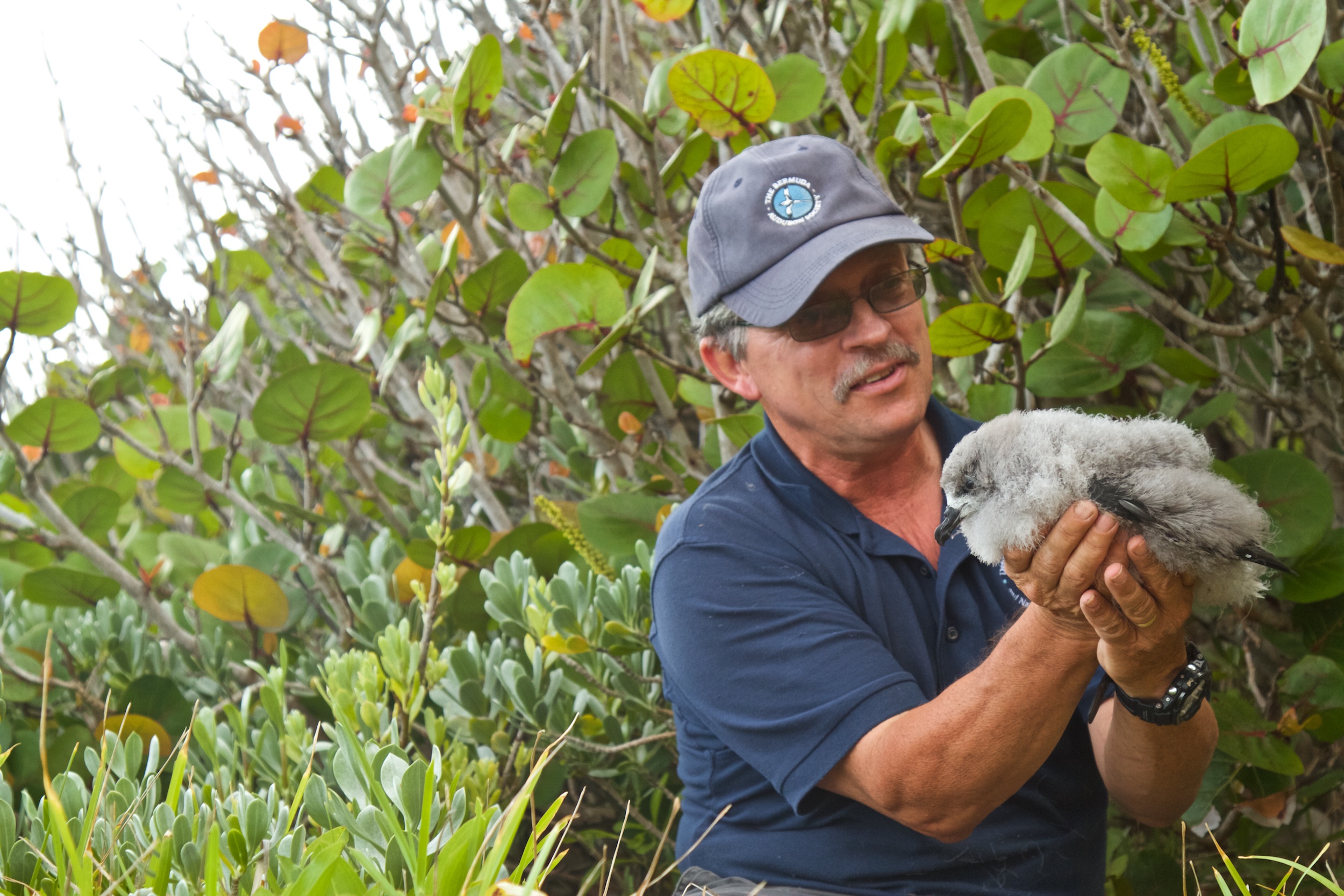

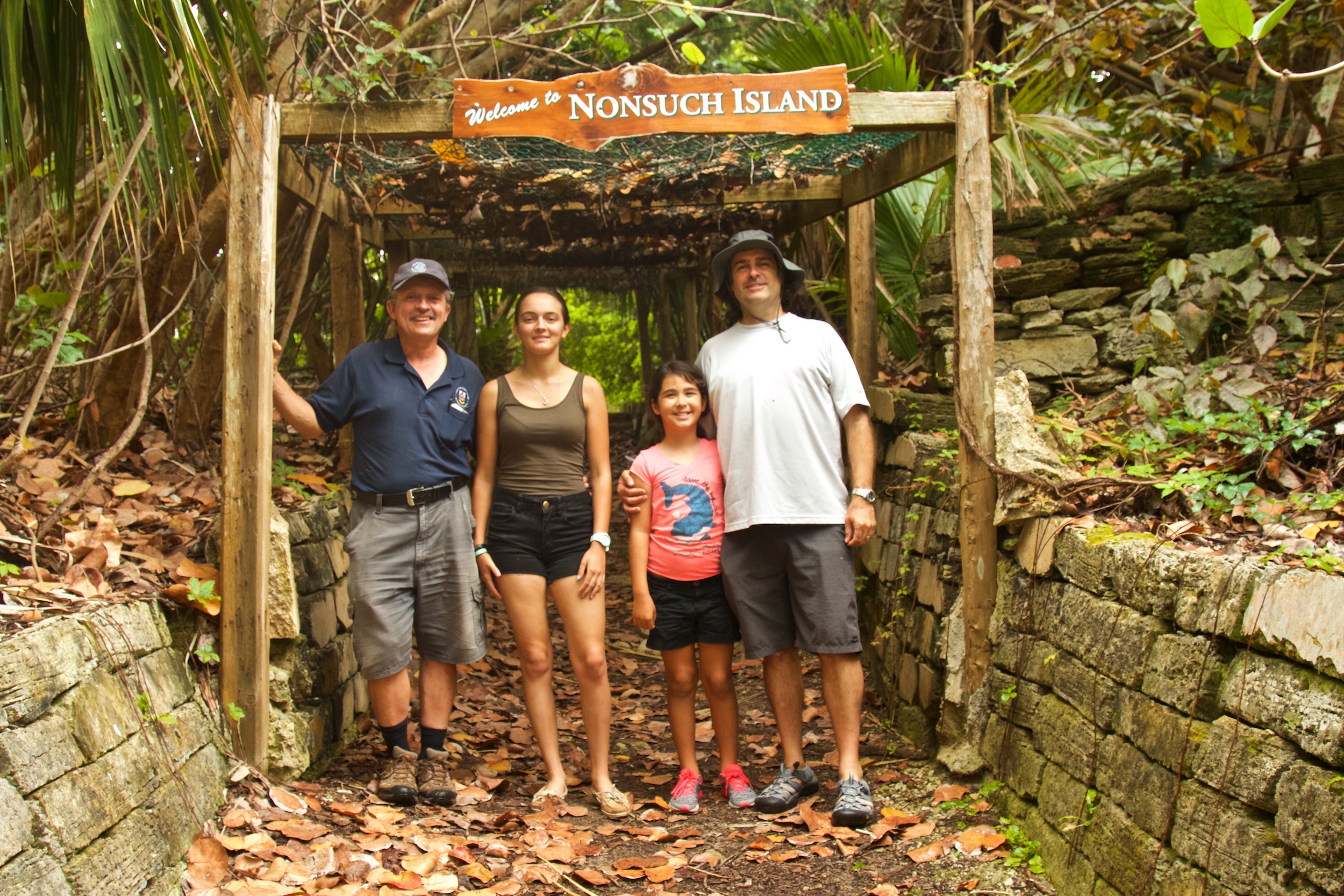
The 58th confirmed hatchling of the 2016 Cahow nesting season was discovered by Jeremy Madeiros in nest chamber #A1 on one of the original nesting islands.
The A1 nest was one of the first 5 nests discovered in 1951 by Bermudian naturalist Louis L. Mowbray, American Ornithologist Robert Cushman Murphy and 15 year old school boy David Wingate and has been under almost continuous use ever since.
This 58th chick is just one off of the record of 59 chicks confirmed in 2014. That record might still be broken once the team has had a chance to survey some of the inaccessible underground nests with remote cameras some time in the next few weeks.
Translocation Colony A on Nonsuch Island however does have a record 10 confirmed hatchlings this season. These ongoing Translocation efforts are all the more important due to the fact the original small nesting islands (including the one where A1 is located) have been progressively falling apart over the past few years.
Easter Cahow chicks, the result of a record breaking nesting season from Translocation Colony A on Nonsuch Island in Bermuda. This season 10 chicks have hatched on Nonsuch out of a total of 58 confirmed hatchings throughout the colony.
LookBermuda's highly popular Nonsuch Expeditions AirportArt theme produced on collaboration with National Geographic photographer David Liittschwager has been extended into the new Cedar Aviation private air terminal.
This initiative supports an educational outreach campaign for the Public and Private schools and the ongoing conservation focused Expeditions. Each print has a Patron who in turn receive a "1 of 1 Patron copy" for personal or corporate use. Please contact the Nonsuch Expeditions Team for more information.
